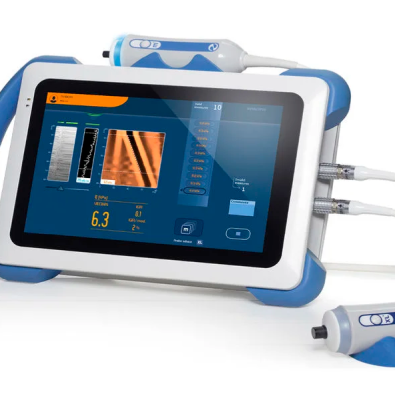FibroScan

Safe and Repeatable Measurement for Monitoring Liver Health
FibroScan is an advanced medical imaging technology that measures the structure and stiffness of the liver in a non-invasive way, without the need for a biopsy. This method determines the degree of liver fibrosis and the amount of fat accumulation, playing an important role in the diagnosis, follow-up, and treatment planning of chronic liver diseases. FibroScan offers patients a painless, fast, and reliable diagnostic option.
Technological Infrastructure and Application
FibroScan works based on the principle of elastography. The device sends low-frequency vibrations to the liver and measures the speed at which these vibrations travel through the tissue. Vibrations move faster in stiff tissue and slower in softer tissue, allowing the stiffness of the liver—fibrosis level—to be determined with millimetric precision.
The device also features the “Controlled Attenuation Parameter (CAP)” function, which measures the amount of fat in the liver. The procedure is completely painless, usually takes only a few minutes, and results are obtained instantly. With these advantages, FibroScan stands out as a strong alternative to traditional liver biopsy.
Advantages
- Non-invasive and painless procedure; no biopsy required.
- Fast and efficient — takes only a few minutes, with immediate results.
- Provides highly accurate assessment of liver fibrosis and fat levels.
- Repeatable measurements make it easier to monitor disease progression.
- Enhances patient comfort with no risk or side effects during the procedure.
Clinical Applications
FibroScan is widely used in the evaluation of liver health in various conditions:
- Chronic Hepatitis B and C: Evaluation of fibrosis and cirrhosis risk.
- Alcoholic Liver Disease: Measurement of liver damage.
- Non-Alcoholic Fatty Liver Disease (NAFLD) and NASH: Grading of liver fat accumulation.
- Cirrhosis Monitoring: Tracking disease progression.
- Pre- and Post-Liver Transplant Evaluation: Assessment of liver condition before and after transplantation.



